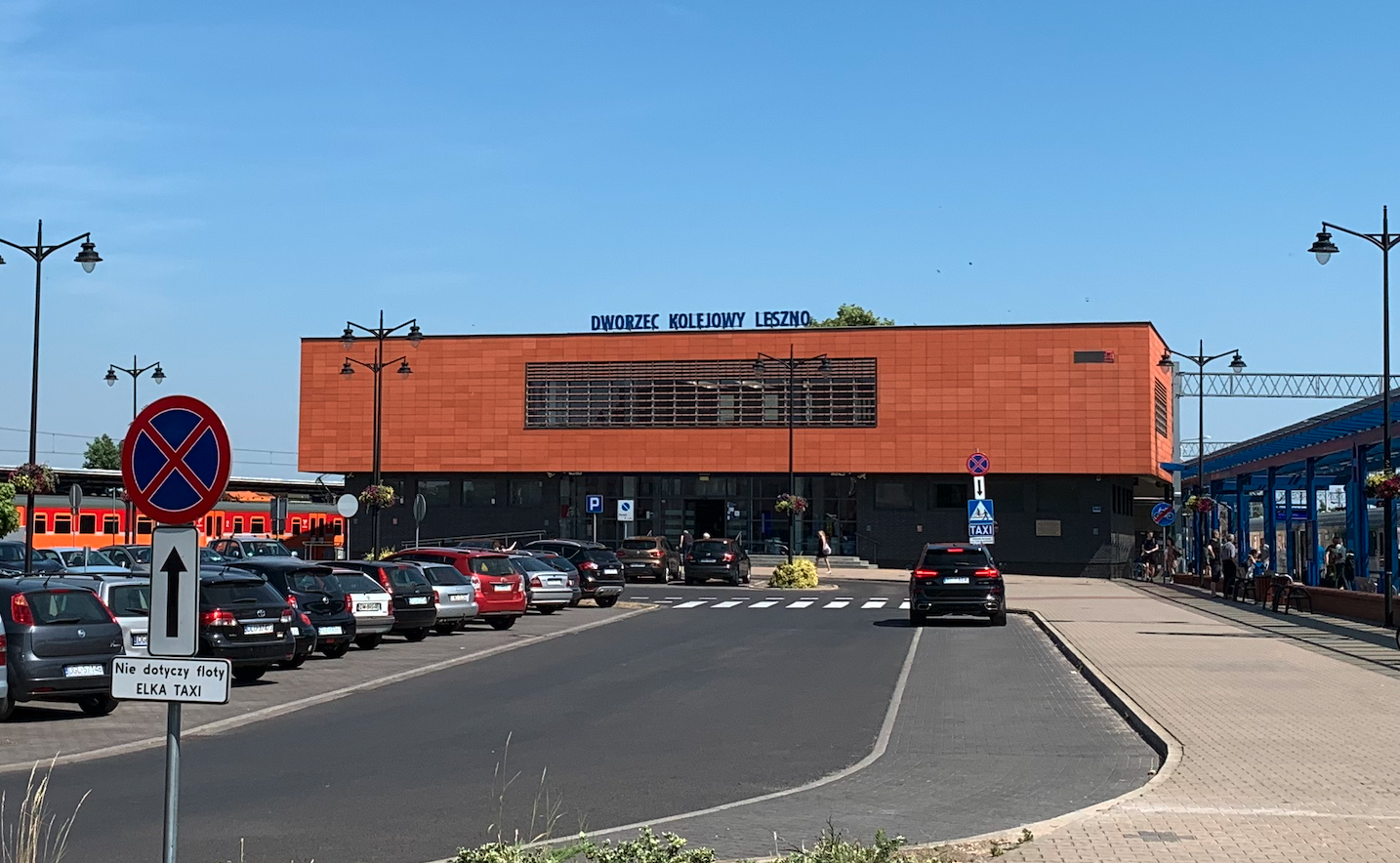Leszno 2025-04-10
Railway in Leszno.
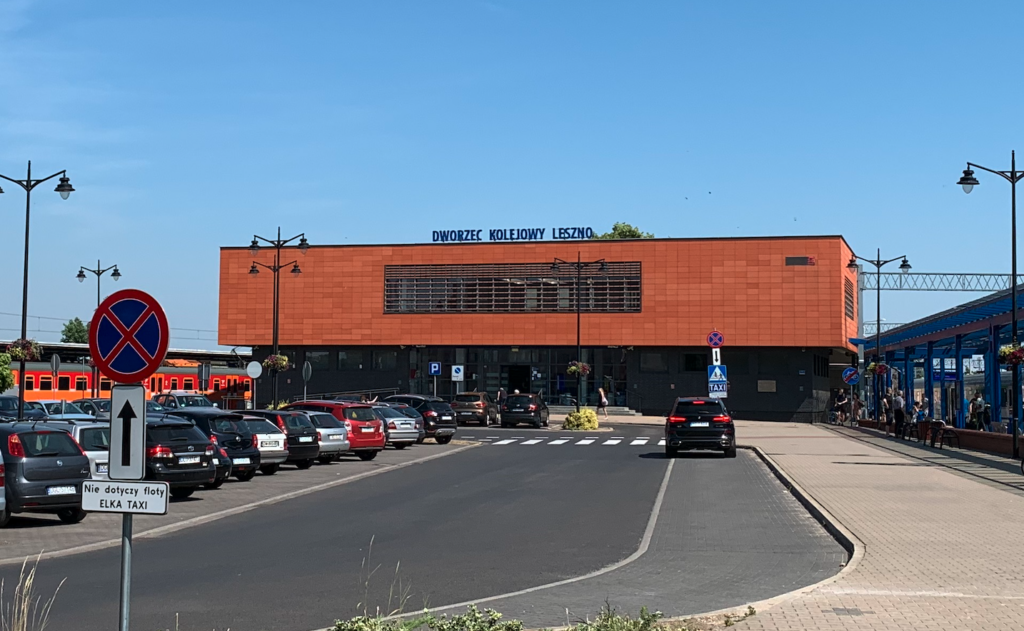
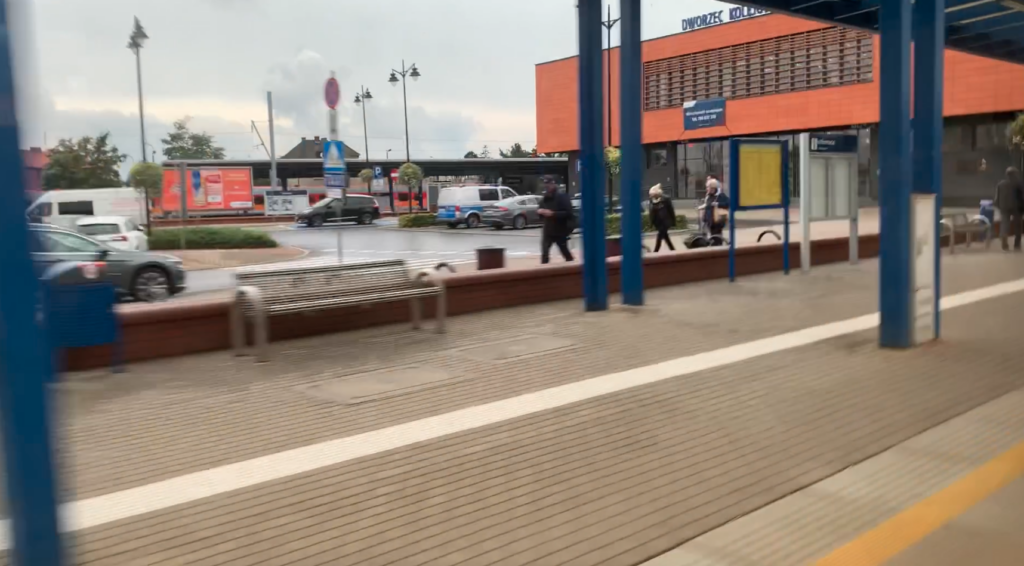
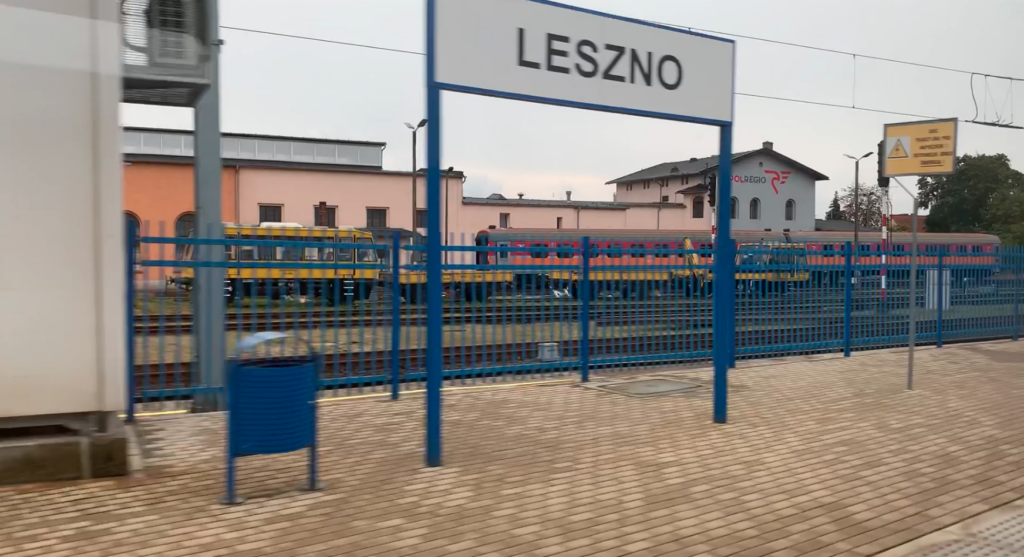
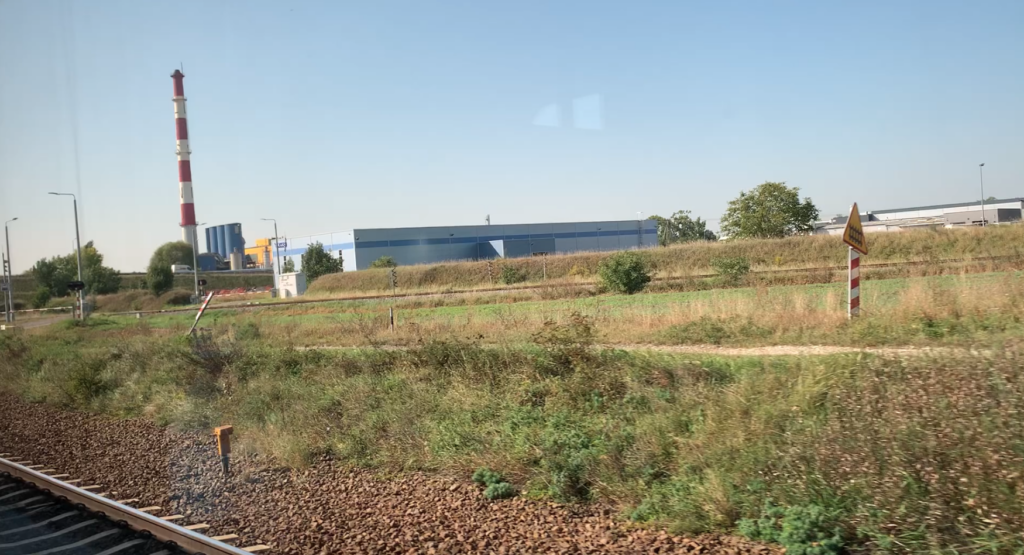
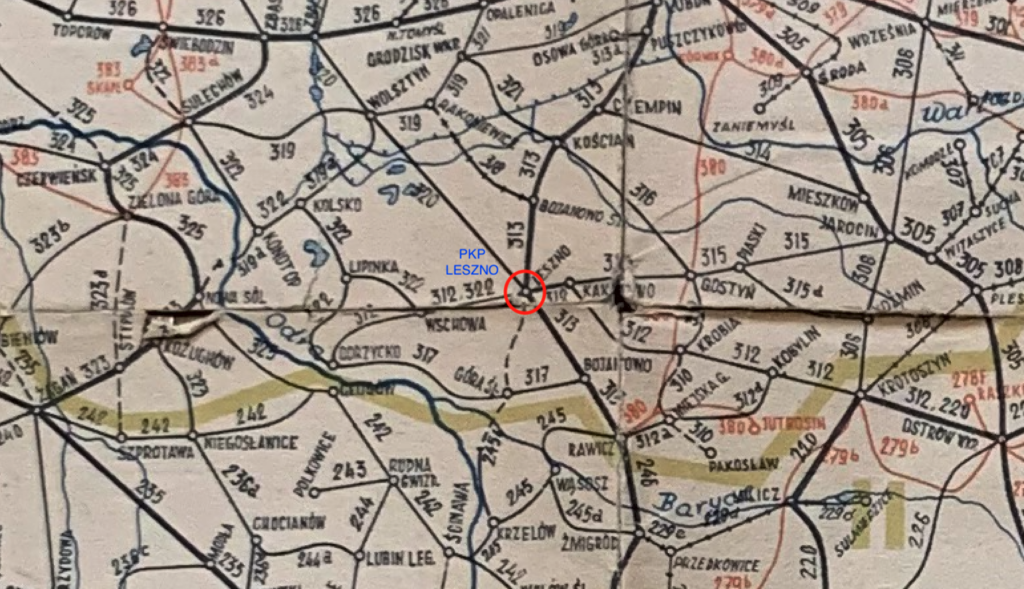
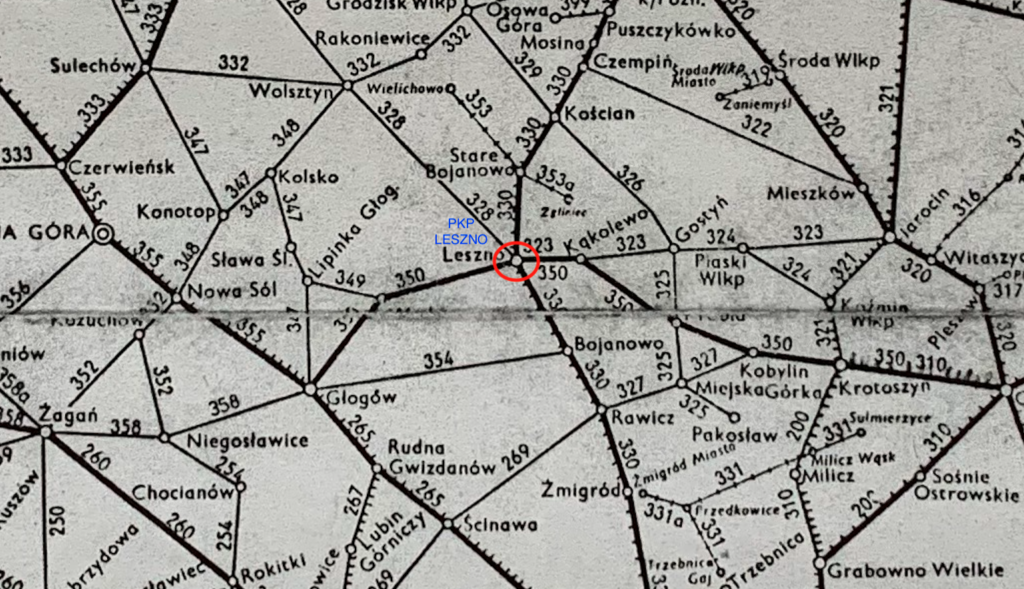
In 1853, a decision was made to build a railway line connecting Poznań with Wrocław. The initiative was taken by the Poznań railway company. The line was to connect Northern Pomerania (Szczecin, Krzyż) with Lower Silesia (Dresden – Wrocław – Gliwice route). The concession for the construction of the Poznań – Leszno – Wrocław route was obtained by the Upper Silesian Railway (Oberschlesische Eisenbahn Gesellschaft). A branch line to Głogów was designed in Leszno. The distance from Wrocław to Leszno is 99 km, and from Poznań to Leszno is 83 km. Leszno to Głogów is 45 km.
Throughout its history, the station in Leszno has changed its name: Lissa in the period 1856-1900, Lissa Posen in the period 1901-1919, Leszno in the period 1919-1939, Lissa (Warthel) in the period 1939-1945, Leszno since 1945.
On 27 September 1856, a technical train from Wrocław via Rawicz arrived in Leszno. Regular rail connections via Leszno began on 27 October 1856. The Leszno to Głogów route was opened on 1 December 1857. In the following years, railway routes were opened to Jarocin (1 October 1888), Ostrów Wielkopolski (1 October 1888) and Wolsztyn (1896).
During the Great World War, in 1916, a railway route was opened from Leszno through Góra Śląska to Krzelów near Ścinawa. This route was 59 km long. On this route in Leszno, the Leszno Dworzec Mały and Leszno Zaborowo railway stations were built. During the Greater Poland Uprising, the insurgents blew up the bridge in Kopanica on the Polish Canal. As a result, the route was impassable. In 1920, most of the route was on the German side. In the period 1922-1991, the route was dismantled. To this day (2021), the station building in Krzelów has been preserved and is inhabited. The only functioning station on this former route is Góra Ślaska, which is connected to Bojanów (route No. 372, 15.200 km long). Only freight traffic takes place here.
After Poland regained independence, a border crossing was established on the Leszno – Głogów route, between the Lasocice station and Wschowa (Fraustadt). In 1919, several trains with soldiers of General Józef Haller’s Blue Army passed along this route. Also on the Wrocław – Leszno route, a state border was established between the Rawicz – Korzeńsko stations.
In 1920, due to the proximity of the border with Germany, the Leszno station was a border station. From here, two pairs of PKP international trains ran to Wrocław and Głogów, as well as German trains, on the Wrocław – Leszno – Poznań – Gdańsk route.
Electrification of the railway in Leszno.
The electrification of the Poznań – Leszno – Wrocław route was carried out in stages in the period 1969 – 1970. However, to date (2021), the remaining routes running through Leszno are without electric traction, because there is little traffic on them. Leszno is such an interesting railway station where the tracks on the eastern side of the station are electrified, and on the western side they do not have electric traction. In 2015, due to a major renovation of the station, one track on the western side received electric traction. It is from this track that local electric trains depart, which start their run in Leszno.
Leszno Station.
The first station building was built in 1857. The Leszno station was built on the western side of the city. In the following years, Międzytorze (the area between the routes from Wrocław and Głogów) and Zatorze (to the west of the station) were built with single-family houses. The station’s track layout meant that the station building was located between the platforms of the Wrocław route and the Głogów route. This layout resembles the former Poznań Główny station, as well as many other stations in Western Poland: Piła, Toruń, Czerwieńsk. The station building in Leszno was in the English neo-Gothic style, which means it resembled a defensive castle a bit. The station was not large, but it was enough for passengers for many years. The first expansion took place in 1899. It consisted of adding another segment at the back. In 1905, small annexes were added from the east and west, i.e. at the expense of the platforms. During the occupation, in the years 1941-1944, the station was expanded for war purposes. This station survived until the end of the 60s of the 20th century.
Already in the 50s, the station building was cramped and impractical. According to the architects, it was not suitable for modification, only for demolition and construction of a new station. By decision of the District Directorate of State Railways in Poznań in 1968, the building was demolished. In the period 1969-1971, a new station was built in the socialist style. The building was simple, with a large cubic capacity, with numerous glazings, a large waiting room, several ticket offices, new toilets. New information boards, a sound system and modern lighting were installed. New waiting rooms were arranged on the first floor of the new building, and on the ground floor the catering section, ticket offices and information for passengers were expanded. The building combined concrete and large glass walls. The facility had three floors.
A tunnel was built under the building, connecting both sides of the station platforms. Platforms 1, 2 and 3 were designated for the Wrocław Główny – Poznań Główny line, platforms 4 and 5 for the Forst – Głogów – Łódź Kaliska, Leszno – Jarocin, Leszno – Zbąszynek lines. The platforms were extended and hardened. Until now, these were low platforms, partially paved. At the same time, the footbridge over the platforms was dismantled. The new station was opened on 30 October 1971. On that day, the station was visited by several thousand residents of Leszno.
Infrastructure.
In 1922, the locomotive shed was expanded in Leszno, which is still in operation, although to a lesser extent than in the 1970s, when PKP recorded peak passenger and freight transport. The current (2021) renovated locomotive shed is half of the former locomotive shed. There is a southern part, no northern part. In 2000, the entire facility was planned to be demolished. However, in 2017, the renewed development of the railway in Poland stopped this process. The remaining part of the locomotive shed was renovated and locomotives are still being renovated here. The locomotive shed turntable is still in use.
Since 2015, rail traffic has been handled by the Local Control Center in Leszno. There are two building complexes of rolling stock maintenance plants at the Leszno station. There is a renovated locomotive shed, a renovated wagon shed (the renovation was completed in 2012), a full-train car wash, a water tower (no longer used). There is also a storage area for unused steam and diesel locomotives.
For many years, a Railway School operated near the railway station. Currently, it is the Complex of Electronics and Telecommunications Schools (Technical School No. 5).
In Leszno itself, in 1977, a viaduct was built along Jana Pawła II Avenue, National Road No. 12, above the railway tracks, eliminating level crossings. The viaduct significantly facilitated car and pedestrian traffic in Leszno. It also made it easier to get to the station by car.
A little earlier, in 1969, an underpass was built for pedestrians under the tracks along Słowińska Street, which made pedestrian traffic easier for residents. Currently (2021), this facility is being rebuilt.
In 2020, a viaduct over the tracks was put into service on Wilkowicka Street. The viaduct runs over five tracks. Until now, there was a level crossing. Leszno’s needs for new viaducts or tunnels did not end there. Viaducts would be necessary along 1 Maja Street, and two viaducts along Dożynkowa Street.
Modernization of the Leszno station.
In March 2010, the modernization of the railway junction in Leszno began, which is currently (2021) nearing completion. First, the station building was modernized, the general shape of which has not changed. The external elevation received a new, attractive appearance. Large surfaces of the external walls were finished with brick-colored ceramic lining. The biggest changes were made in the interior. Architectural barriers for the disabled disappeared. The number of ticket offices was reduced, but ticket offices for wheelchair users were added. Ticket machines, ATMs and cash deposit machines were installed. New granite floors were laid, modern automatic doors were installed. A viewing point was created on the first floor. The station building was opened after modernization on January 30, 2012. The usable area is currently 2,482.9 m2. The investment cost is approximately PLN 13,700,000.
In 2011, the station square was rebuilt. A new surface, parking spaces and new street lighting were made. In the period 2017-2022, the platforms, track system and traction network were rebuilt. During the platform renovations, the track bed, tracks and the entire electric traction were completely replaced.
Platform 1 is located by the station building from the east and west. Platform 2 and Platform 3 are on the eastern side. The platforms are elevated, roofed, equipped with benches, garbage cans, new railway information and new lighting. The surface has been adapted for the safe movement of blind and visually impaired people. The platforms are higher, making it easier to board the train. Platform 4 and Platform 5 are on the western side of the station building. Platforms: 1 eastern, 2 and 3 serve traffic in the direction of Poznań – Wrocław. Platform 4 serves traffic in the direction of Głogów. Platform 5 serves traffic in the direction of Zbąszynek and Ostrów Wielkopolski.
The passenger tunnel has also been renovated, where in addition to the stairs there are also elevators. During the renovation of the tunnel, a temporary footbridge was built over the tracks. Work was carried out to connect the tunnel with Torowa Street and Jana Kilińskiego Street.
Railway routes in Leszno:
No. 271 Wrocław Główny – Poznań Główny is fully electrified, fully double-track, of national importance, with a length of 164 km. Currently (2021), work is underway to replace the tracks and the traction network in sections, so that trains will soon travel on this route at a speed of 160 km/h. The travel time from Poznań to Wrocław will be 90 minutes. Route No. 14 Łódź Kaliska – Forst, with a length of 388.600 km. It runs through Ostrów Wielkopolski – Leszno – Żagań. Route No. 359 Leszno – Zbąszyń, 69.700 km long, single-track, not electrified, active with passenger and freight traffic.
No. 318 was a railway line, never electrified, single-track with a length of 59.800 km, connecting Leszno Dworzec Mały – Góra Śląska – Krzelów. No. 817 Leszno – Leszno Grzybowo, dismantled in the period 2014 – 2017. In the past, sidings ran from the railway station to industrial plants: Zakłady Młynarskie, Metalplast, Agroma, Fabryka Pomp.
In the period 2005 – 2010, many rail connections were closed. Among others, the InterCity train Wrocław – Leszno – Warsaw. Since 2017, many passenger connections have been reactivated.
Written by Karol Placha Hetman
